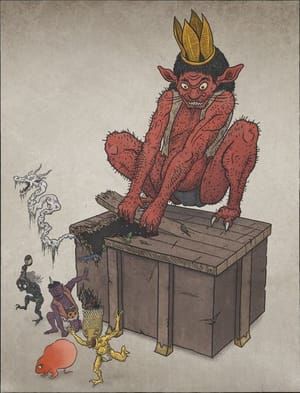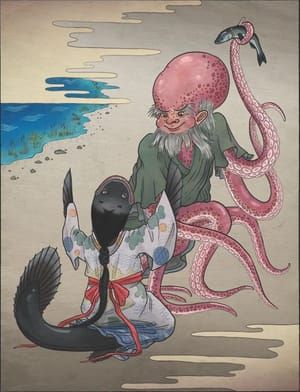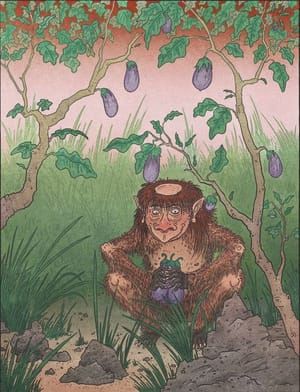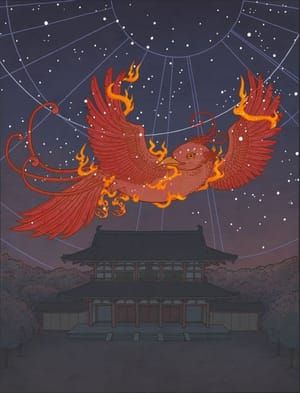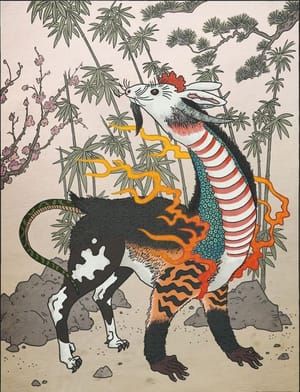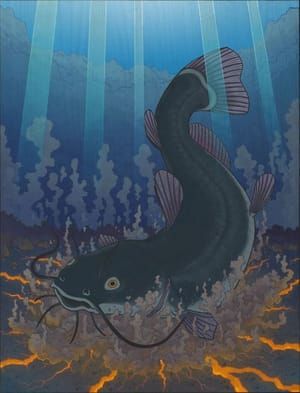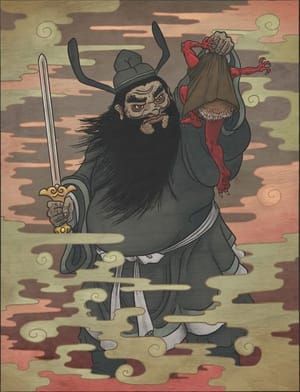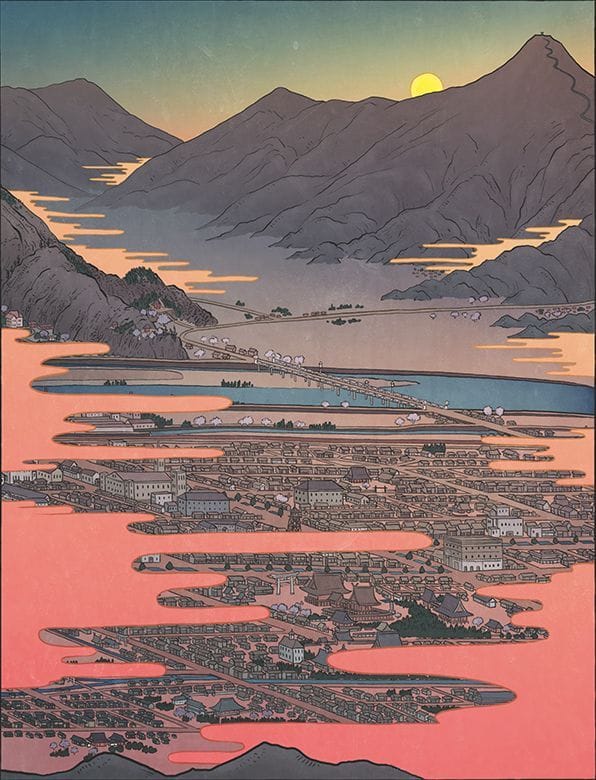

Hinode, 2016
Matthew Meyer
日の出
Hinode, the break of dawn, signals the end of the power of evil spirits over the waking world. The holy light of the sun banishes yōkai, ghosts, and demons back to the places from which they came. As the morning light fills the shadows, unknown things no longer lurk. As the sun’s rays pierce the dark forests, strange shapes no longer hide among the trees. The time of meeting evil spirits is over. Once again the world is safe for humans.
The sun has always been a central part of Japanese religion. Amaterasu, the sun goddess, is the most important deity in Shinto and is worshipped across Japan. The importance of the sun in Japanese culture can be seen in Japan’s nickname—the land of the rising sun—on the Japanese flag, and in the native word for Japan itself: Nihon, “the origin of the sun.”
In Japanese artwork, the sun often appears as the final scene in picture scrolls depicting yōkai and the night parade of one hundred demons. Similarly, Toriyama Sekien’s second illustrated yōkai encyclopedia, Konjaku gazu zoku hyakki, opens with ōmagatoki and closes with hinode, depicting the monsters that rule the world from dusk until dawn.
Matthew Meyer
artistArthur
Wait what?

